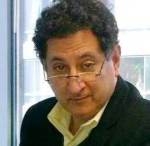Updated
Morocco Continues to Lead Economic Growth in the Region – Jean R. AbiNader
Jean R. AbiNader, MATIC
May 11, 2017
Two major studies released this month, the African Competitiveness Report published by the World Economic Forum, and the Africa Attractiveness Report from Ernst and Young (EY), point out that Morocco leads the other members of the Arab Maghreb Union (AMU) in many indicators of economic resilience. Unlike Algeria, Libya, Mauritania, and Tunisia, perhaps the most singular factor contributing to its success is Morocco’s stability, which allows it to grow without risking inflation and massive debt from overspending, or overreliance on select sectors resulting in unbalanced growth. This does not mean that there is an easy way forward. Challenges remain, including high unemployment and the mismatch between educational outputs and market needs to the need to balance economic growth among different regions of the country.
In the World Economic Forum Report focusing on Africa, data from the World Bank, the African Development Bank, the UN, Moroccan public and private sector sources, and extensive interviews with company executives are used to rank countries along 12 indicators of the Global Competitiveness Index. These are: institutional performance, infrastructure, macroeconomic environment, health and primary education, higher education and training, goods market efficiency, labor market efficiency, financial market development, technological readiness, market size, business sophistication, and capacity for innovation. The focus of this edition of the biennial report is Addressing Africa’s Demographic Dividend, highlighting the policies that need to be implemented to take full advantage of the burgeoning youth population.
Morocco has several bright results. It places fourth overall in Africa and number one in North Africa. In specific categories, it placed sixth in institutional performance in all of Africa. In North Africa, it is above the average in health and primary education as well as higher education and training, and second only to Egypt in market size. Of the challenges to economic growth identified through company surveys, the top six are: access to financing, inadequately educated workforce, inefficient government bureaucracy, tax rates, insufficient capacity to innovate, and corruption. While the country can measure its progress with some satisfaction, there is still a long way to go in terms of facing its toughest tests of creating jobs for well-trained workers in an economy that supports and nurtures innovation and utilizes extensive broadband capacity.
The WEF report also makes special note of Morocco’s innovative approach to eradicating slum housing. “In Morocco, a small tax on cement is used to constitute a guarantee fund for low-income housing and to support the program of slums elimination (‘Villes sans bidonvilles’). This fund has been successful in increasing mortgage access for households in the informal sector and reducing the number of slums in the country.” It is this capacity for innovation outside traditional economic boundaries that will enable Morocco to achieve even better results in the future.
The EY report “highlights areas requiring policy action and investment to ensure that Africa lays a solid foundation for sustained and inclusive growth.” It spends the first part of the report looking at Foreign Direct Investment (FDI) and how it reflects the confidence that investors have in each country’s capability to manage its future.
Regarding Morocco, it points out that there were 81 FDI driven projects in 2016, up 9.5% from the previous year, garnering 12% of the overall projects in the Kingdom. As the report notes, “Aided by a stable administration, even during the Arab Spring, Morocco has increasingly marketed itself as an export base for Europe, Africa and the Middle East. The country’s automotive sector has especially attracted investor interest, with FDI projects increasing from 5 in 2014 and 10 in 2015 to 14 in 2016.”
To date, this has created more than 19,000 jobs, critical to overall stability. Additionally, Morocco does well on what is called the Africa Attractiveness Index (AAI), which details the strengths and weaknesses perceived by international investors. Morocco placed first out of 35 countries in 2017’s ranking, with strong showings in business enabling (3rd place), investment in business (4th), economic development (5th), governance (8th), market size (9th), and macroeconomic indicators (18th). It also came in second in amount of US investment with 14 projects—a figure that should go higher as Boeing ramps up its supply chain in Morocco.
In terms of target sectors for FDI in Morocco, four areas dominated with #1 rankings: transportation and logistics, real estate and hospitality, clean tech, and automotive; while business services come in at #2. What is important about this diversity is that there are both capital and labor intensive industries. This means that the workforce must also be diverse, from large numbers of semi-skilled service workers to smaller numbers of high tech IT and industrial workers. Jobs in FDI industries are well-paying, thus boosting the overall economy, and moving Morocco towards the level of economic growth required to ensure its long-term market stability.
While all of this is good news, both reports point out that Morocco must do much more to equip its youth with market-centered skills through greater emphasis on vocational and technical training, less emphasis on university degrees unrelated to the job market, increased support for special economic zones outside the Tangier-Casablanca corridor to help reduce negative environmental consequences, and greater support for entrepreneurship, competency training, and transitioning the informal sector to boost economic growth and job creation.
